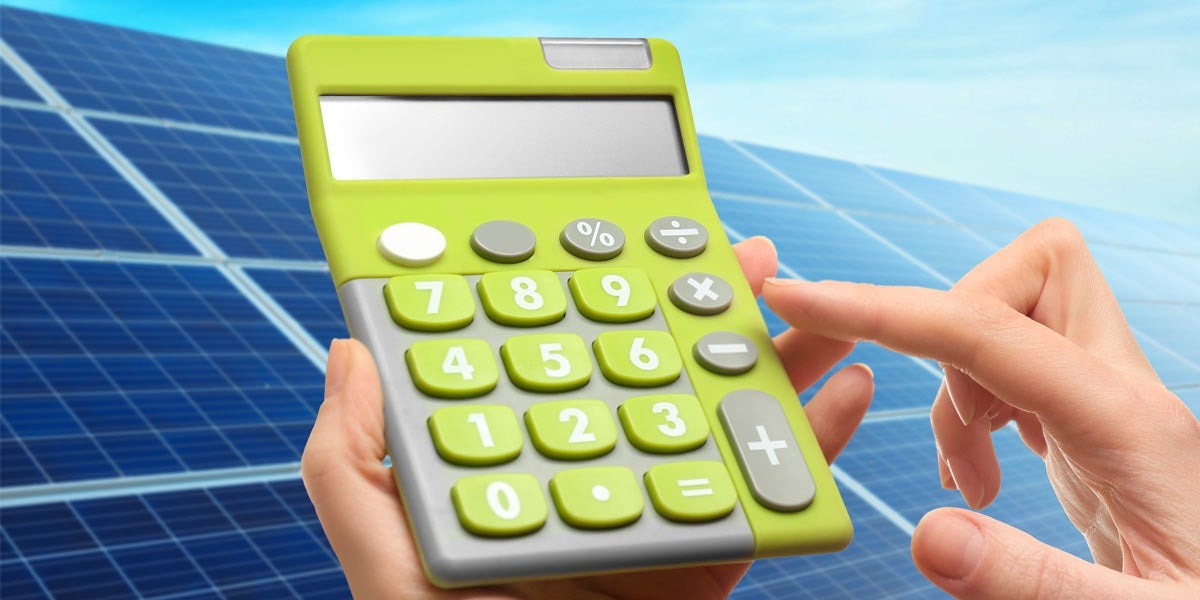How much do solar panels save in 2023?
Updated
Updated

Residential solar panels not only help you reduce your carbon footprint, they help you save money on your utility bills, as well. Rebates and incentives like the federal solar tax credit can help you save even more and make installing solar panels even easier.
How much you actually save depends on many factors, including your power usage, local electricity rates, and the size of your solar system. So when you see statistics on how much solar energy saves on average, those numbers aren’t taking all of these personal details into account.
Luckily, we’ve created our solar savings calculator that analyzes all of this information. When you use our solar savings estimator, you get an idea of how much you can save with solar panels on your specific home - an estimate that is tailored to you.
Below, we dive into how much solar panels save on average, and what you can learn by using our calculator.
One of the easiest ways to find out how much you can save with solar panels is by using our solar calculator. SolarReviews has the world’s first solar power calculator that shows the system size that’s right for your home and what your return on investment could look like.
Our calculator provides savings estimates based on the following:
We also outline what solar tax incentives and other rebates are available in your area that will help bring down the upfront cost of a solar power system.
When we talk about solar savings, we are actually talking about avoided energy costs or the amount of money you would have spent on your electric bill had you not installed solar panels on your home.
The average annual electricity consumption for a U.S. residential utility customer is 10,715 kilowatt hours (kWh) per year, which is an average of about 892 kWh per month.
When you multiply that by the national average electricity rate of $0.14 per kWh, you’ll find that the typical American family has a monthly electric bill of around $125. This means if enough solar panels were installed to cover this electricity usage, the average household could save almost $1,500 a year on electric bills!
Here’s a list of the average solar savings that the typical homeowner in each of the top 50 U.S. solar cities are likely to see for a 6 kW, cash-purchased solar energy system on their home:
*Electricity cost reflects average of existing rate plans from largest utility in each city
**Savings assume full retail net metering, actual net metering policies will vary by state and utility company
**Production forecast assumes installation at optimal title and azimuth with no external shading and typical isolation conditions based on data from the National Renewable Energy Laboratory (NREL)
Another benefit to using our solar calculator is our accurate and live solar installation costs that we get directly from our partner installers.
So not only will you know how much solar can save you, you’ll get an idea of what size solar system you’ll need and how much it’ll cost.
To gauge whether or not solar panels are a worthwhile investment in your area, be sure to look at the lifetime savings estimates in our calculator reports.
As of January 2023, an average 6 kW solar panel installation costs $3.00 per watt. That means the total average cost of the system would come out to about $18,000. The 30% federal tax credit knocks an extra $5,400 or so off the cost, which brings the total down to just about $12,600.
We here at SolarReviews are passionate about solar and clean energy and hope that you decide to invest in solar for your home and our planet. However, we are also committed to giving you the full picture so you can make an informed decision.
With that said, it’s important for you to be aware of the limitations of solar saving estimates.
Forecasting residential solar savings can be more difficult than it first appears for two main reasons:
Figuring out the solar energy production over the lifetime of solar panels is relatively predictable, and solar production in different climates and conditions is well-known and understood. Predicting the future value of solar energy is where it gets tricky.
Most studies have concluded that the price of electricity in the U.S. has gone up by around 3% each year for the past decade. It’s projected that between 2021 and 2022, the residential electricity price will increase by 1.3%. Based on the trends in the past, we can pretty safely assume that the cost of electricity will continue to rise in the future.
So, at SolarReviews, we are confident in our energy bill savings estimations. But you should keep in mind that there is a slight bit of uncertainty when it comes to predicting future utility rates and solar production, so how much you actually save with solar will vary.
Going solar is a big decision and it can be hard to know who to trust. At SolarReviews, we’ve dedicated ourselves to giving consumers the most accurate solar estimations possible to help make the switch to solar a little easier.